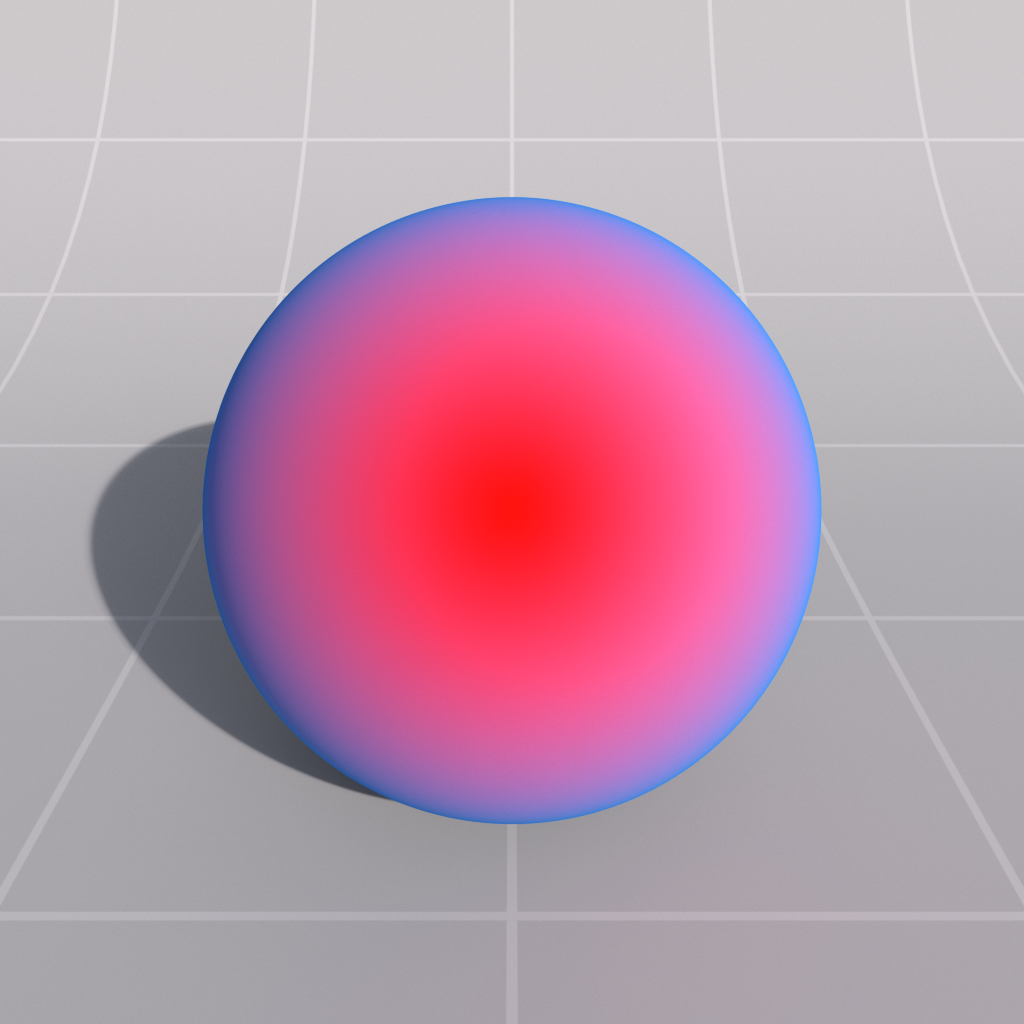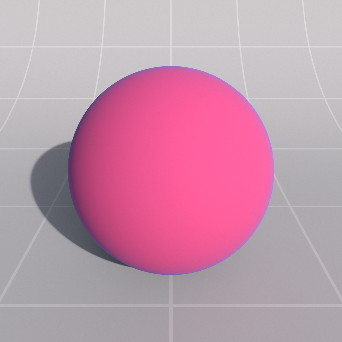Table Of Contents
Introduction
This shader node computes a Fresnel effect weighted color. The Fresnel effect determines how the reflectivity of a surface changes when an incident ray is parallel vs perpendicular to the surface normal, with the reflectivity being strongest when perpendicular. This node is useful for effects such as controlling color ramps that change with viewing angle or blending material reflection layers in a physically correct way.

Above shows an example of the 'Fresnel effect' of facing reflectivity vs perpendicular reflectivity, tinted green to highlight the effect

Parameters
Falloff Color
Use Index of Refraction
This allows you to toggle between a cheap Schlick Fresnel computation that does not require an Index of Refraction and a more complex, but more correct, method that does.
Curve Falloff
When Use Index of Refraction is disabled, this option controls the shape of the Fresnel fall-off curve as it transitions between the Facing Color and the Perpendicular Color.
|
|
|
|
|
|
Curve Falloff: 0.5 Facing Color: Red Perpendicular Color: Blue |
1.0 |
3.0 |
5.0 |
Facing Color
This is the color when the incident ray is parallel to the surface normal.
|
|
|
|
Facing Color: Red Perpendicular Color: Blue |
Checker |
Perpendicular Color
This is the color when the incident ray is perpendicular to the surface normal.
|
|
|
|
Perpendicular Color: Blue Facing Color: Red |
Checker |
IOR
The scientific IOR and k values for metal materials can seem non-intuitive, but a wide range of them can be found at this website: http://refractiveindex.info/
Index of Refraction
When Use Index of Refraction is enabled, this is the value that describes the index of refraction. For non-metals, the facing Fresnel reflectivity is pretty dim and this value should be between 1.0 and 2.0.
|
|
|
|
|
|
Index of Refraction: 1 Facing Color: Red Perpendicular Color: Blue Correct Facing Color: Disabled |
1.4 |
2.0 |
3.0 |
Extinction Coefficient (k)
This controls the 'k' part of complex IOR, which is required for metals. It should be left at 0.0 for non-metals.
|
|
|
|
|
|
Extinction Coefficient (k): 0 Index of Refraction: 1.4 Facing Color: Red Perpendicular Color: Blue Correct Facing Color: Disabled |
1.0 |
2.0 |
3.0 |
Correct Facing Color Intensity
When this option is enabled, the Facing Color intensity is corrected to better match the computed Fresnel reflectivity, for more realistic results.
|
|
|
|
|
|
Correct Facing Color: Enabled Extinction Coefficient (k): 0 Index of Refraction: 1.4 Facing Color: Red Perpendicular Color: Blue
|
Disabled 0 |
Enabled 2 |
Disabled 2 |
Bump Map
You can use a Bump Map here to use modified surface normals for the fresnel calculation.



















